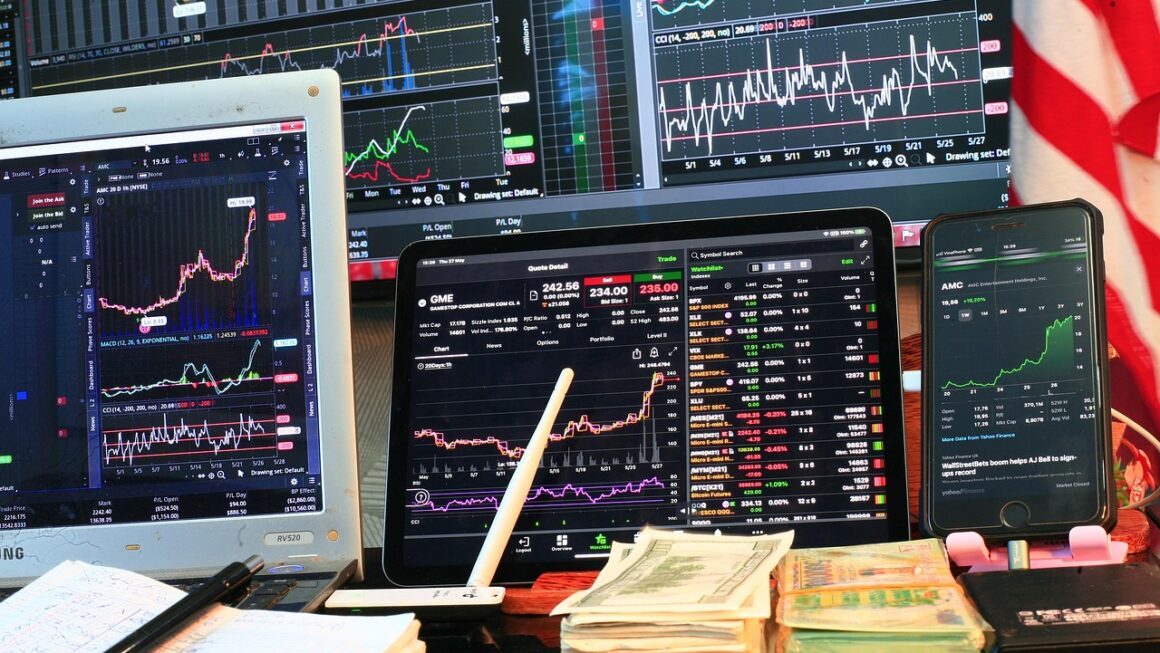Leverage trading: the concept can sound intimidating, conjuring images of seasoned Wall Street veterans and complex financial algorithms. But, the basic principle is surprisingly straightforward: it’s about amplifying your trading power with borrowed capital. While it undeniably offers the potential for magnified profits, it also comes with amplified risks. This blog post aims to demystify leverage trading, exploring its mechanisms, benefits, risks, and strategies for navigating this powerful tool.
What is Leverage Trading?
The Core Concept of Leverage
At its heart, leverage trading allows you to control a larger position in an asset than you could with your own capital alone. Brokers essentially loan you funds, enabling you to increase your exposure to the market. This borrowed capital multiplies both your potential gains and potential losses.
- Definition: Using borrowed funds to increase the potential return of an investment.
- Mechanism: Brokers offer leverage ratios (e.g., 1:10, 1:50, 1:100), indicating how much borrowed capital you’re using relative to your own.
- Example: With a 1:10 leverage ratio and $1,000, you can control a $10,000 position.
Understanding Margin
Margin is the amount of your own capital that you need to deposit with the broker as collateral to open and maintain a leveraged position. It acts as a safety net for the broker, covering potential losses.
- Initial Margin: The upfront capital required to open a leveraged position.
- Maintenance Margin: The minimum amount of equity you must maintain in your account to keep the position open. If your account falls below this level, you may receive a margin call.
- Margin Call: A notification from your broker that your account equity has fallen below the maintenance margin requirement. You’ll need to deposit additional funds or close your position to avoid liquidation.
How Leverage Works in Practice
Imagine you believe the price of Bitcoin will rise. You have $1,000 and your broker offers a leverage of 1:5. This allows you to control $5,000 worth of Bitcoin. If Bitcoin’s price increases by 10%, your $5,000 position will gain $500. That’s a 50% return on your initial $1,000 investment. However, if the price falls by 10%, you’ll lose $500 – half of your initial investment. A larger fall could lead to a margin call or even complete loss of your initial capital.
Benefits of Leverage Trading
Amplified Profit Potential
This is the most obvious advantage. Leverage allows you to potentially generate significant profits with a relatively small initial investment. Even small price movements can translate into substantial gains.
- Higher ROI: Potential for larger returns on your capital.
- Capital Efficiency: Control larger positions without tying up significant capital.
Increased Trading Opportunities
Leverage opens up opportunities to trade assets that might otherwise be inaccessible due to high capital requirements. It allows you to diversify your portfolio with smaller initial outlays.
- Access to Diverse Markets: Trade currencies, commodities, indices, and stocks.
- Flexibility: Capital can be used for other investments or opportunities.
Short Selling Opportunities
Leverage facilitates short selling, allowing you to profit from declining asset prices. This provides more trading strategies in bear markets.
- Profit from Downturns: Generate profits when markets fall.
- Hedge Existing Positions: Mitigate risk by shorting assets correlated to your portfolio.
Risks of Leverage Trading
Amplified Losses
Just as leverage magnifies profits, it also magnifies losses. A small adverse price movement can quickly wipe out your initial investment and even lead to owing your broker money.
- Potential for Significant Losses: Losses can exceed your initial investment.
- Margin Calls: Forced liquidation of positions to cover losses.
Margin Call Risk
If your position moves against you and your account equity falls below the maintenance margin, you’ll receive a margin call. Failing to meet the margin call can result in your positions being automatically closed at a loss, regardless of whether the market might later recover.
- Forced Liquidation: Positions closed automatically to cover losses.
- Loss of Control: Reduced control over your trading strategy during a margin call.
High Borrowing Costs
Brokers charge fees and interest on the borrowed capital, which can erode your profits. These costs need to be factored into your trading strategy.
- Interest Charges: Cost of borrowing capital.
- Overnight Fees: Fees charged for holding positions overnight.
Emotional Impact
The high-stakes nature of leverage trading can lead to emotional decision-making, increasing the risk of impulsive trades and poor risk management. Fear and greed can be amplified, leading to potentially catastrophic results.
- Increased Stress: High-pressure environment can lead to poor decision-making.
- Emotional Trading: Impulsive decisions based on fear or greed.
Strategies for Managing Risk in Leverage Trading
Risk Management is Key
Effective risk management is paramount when trading with leverage. Without a solid strategy, the potential for significant losses far outweighs the potential gains.
- Set Stop-Loss Orders: Automatically close your position if the price moves against you by a specified amount.
- Use Appropriate Leverage Ratios: Don’t over-leverage your account. Start with lower ratios and gradually increase as your experience grows.
- Diversify Your Portfolio: Avoid putting all your eggs in one basket. Diversify your investments to spread risk.
- Calculate Position Sizes: Determine the appropriate position size based on your risk tolerance and account size.
Understanding Leverage Ratios
Choosing the right leverage ratio is crucial. Higher leverage ratios offer greater potential profit but also carry significantly higher risk. Consider your risk tolerance and trading experience when selecting a leverage ratio.
- Lower Leverage Ratios: Suitable for beginners and risk-averse traders.
- Higher Leverage Ratios: Suitable for experienced traders with a high-risk tolerance.
- Example: A 1:2 leverage ratio is less risky than a 1:10 ratio.
Emotional Control and Discipline
Maintaining emotional control and discipline is essential for successful leverage trading. Avoid impulsive decisions based on fear or greed. Stick to your trading plan and don’t let emotions cloud your judgment.
- Develop a Trading Plan: Outline your entry and exit strategies, risk management rules, and profit targets.
- Avoid Overtrading: Resist the urge to constantly trade. Stick to your plan and wait for high-probability setups.
- Take Breaks: Step away from the screen when feeling stressed or emotional.
Choosing a Broker for Leverage Trading
Regulation and Security
Select a broker that is regulated by a reputable financial authority. This ensures that the broker adheres to strict financial standards and protects your funds.
- Check for Regulation: Look for regulation from authorities such as the SEC (US), FCA (UK), or ASIC (Australia).
- Security Measures: Ensure the broker has robust security measures in place to protect your account from hacking and unauthorized access.
- Client Fund Segregation: Verify that the broker segregates client funds from their own operational funds.
Fees and Commissions
Compare the fees and commissions charged by different brokers. Look for transparent and competitive pricing.
- Spreads: The difference between the bid and ask price.
- Commissions: Fees charged per trade.
- Overnight Fees: Fees charged for holding positions overnight.
- Deposit and Withdrawal Fees: Fees charged for depositing or withdrawing funds.
Trading Platform and Tools
Choose a broker with a user-friendly and feature-rich trading platform. Ensure the platform offers the tools and resources you need to analyze markets and execute trades effectively.
- Charting Tools: Advanced charting tools for technical analysis.
- Order Types: A variety of order types, including market orders, limit orders, and stop-loss orders.
- Mobile Trading: A mobile app for trading on the go.
- Educational Resources: Access to educational materials, webinars, and tutorials.
Conclusion
Leverage trading can be a powerful tool for experienced traders seeking to amplify their profits. However, it is crucial to understand the inherent risks and implement effective risk management strategies. Approaching leverage trading with caution, discipline, and a thorough understanding of the market is essential for long-term success. Before engaging in leverage trading, it’s wise to practice on a demo account and gain confidence in your trading strategies. Remember that leverage amplifies both gains and losses, and responsible trading is the key to navigating this complex and potentially rewarding world.




